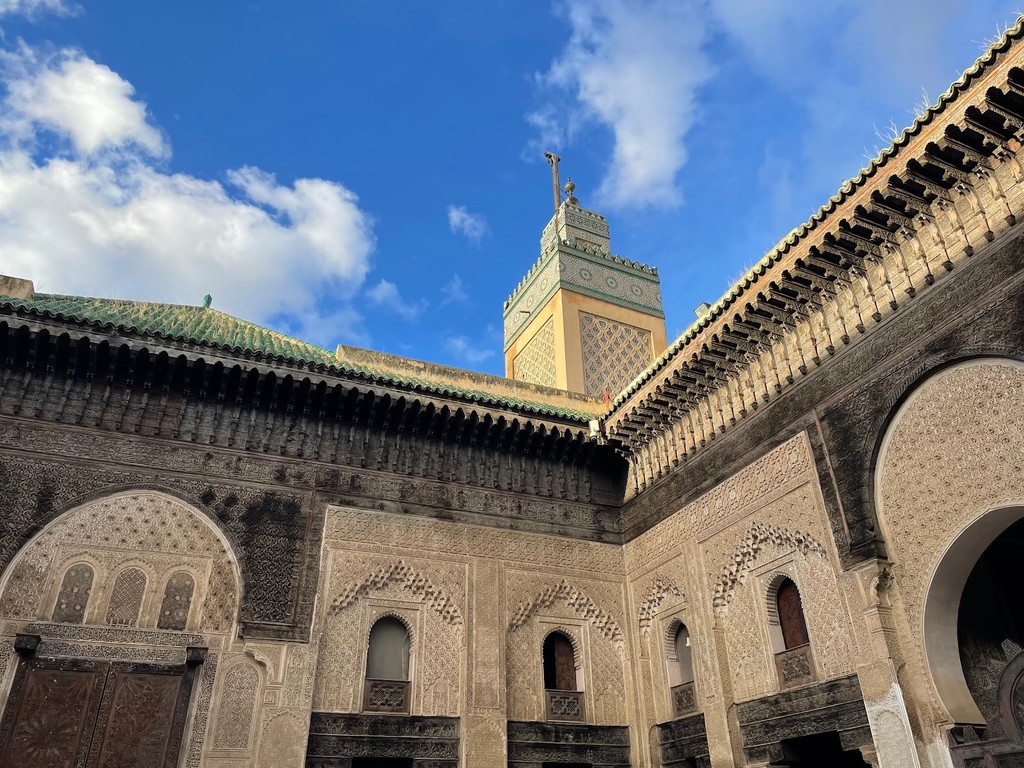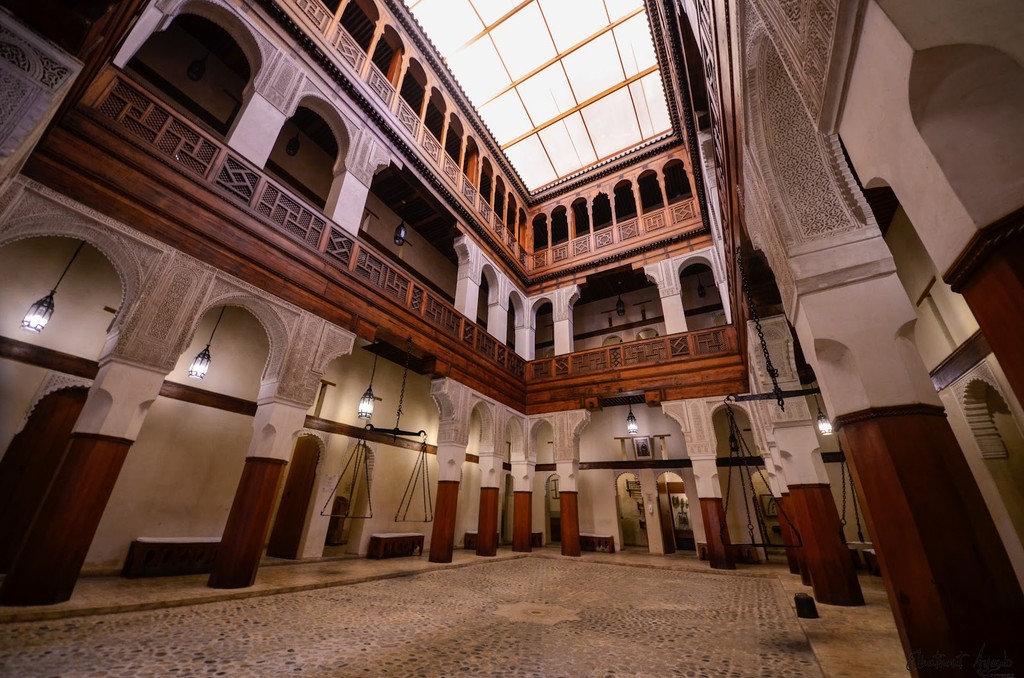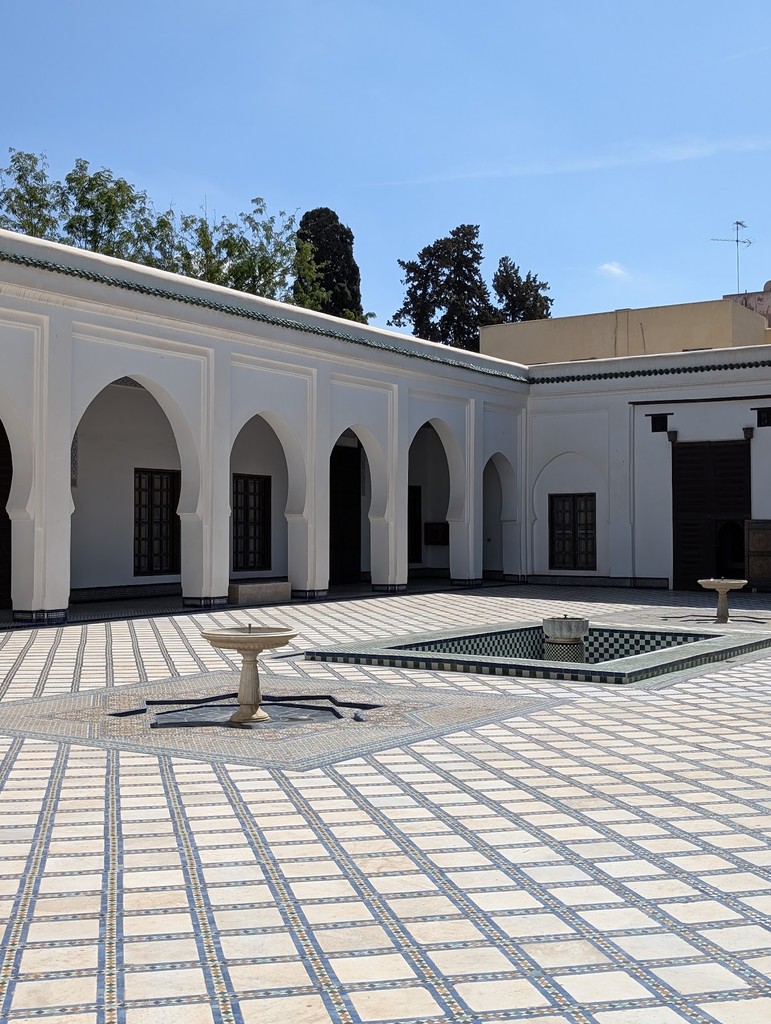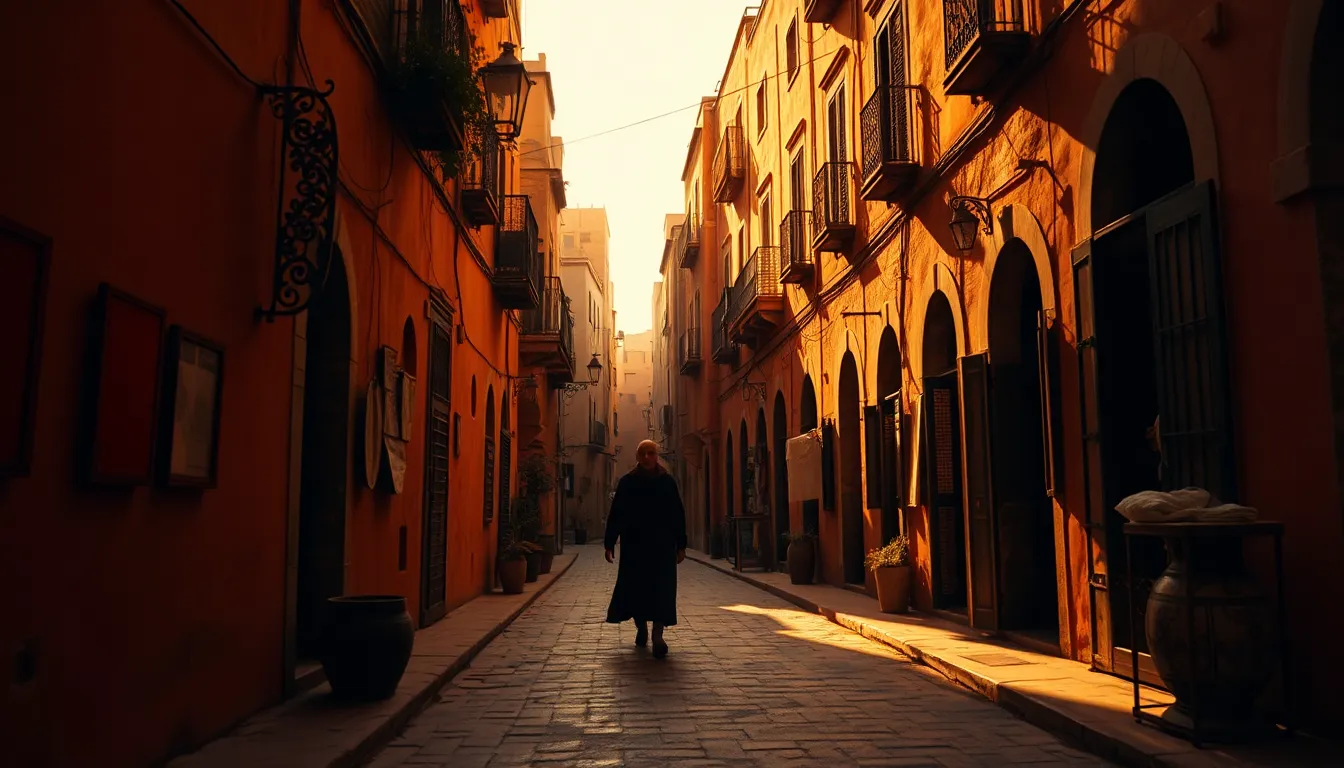Fes: A Journey Through Time and Culture
Embark on a captivating free walking tour through Fes, where history, culture, and stunning architecture come to life in every step you take.
Time
3 Hours
Stops
8 Places
Distance
3.2 km
Bab Bou Jeloud (Blue Gate)
Start your journey at the iconic Bab Bou Jeloud, the stunning blue-tiled gate that marks the entrance to Fes el-Bali, the oldest walled part of the city.

Bab Bou Jeloud (Blue Gate) (Source: Google Maps)
Bab Bou Jeloud, known as the Blue Gate, is a stunning entrance to Fes el-Bali. This monumental gate is adorned with intricate blue and green tiles, a hallmark of Moroccan architecture. Built in the early 20th century, it symbolizes the gateway to the city's rich history. The gate serves not only as an entrance but as a cultural landmark, representing the blend of Islamic and Andalusian influences that characterize Fes. Its vibrant colors and detailed mosaics invite visitors to step into a world where ancient traditions meet modern life, making it a perfect starting point for exploring the labyrinthine streets of the medina.
Bou Inania Madrasa
Just a short walk from Bab Bou Jeloud, the Bou Inania Madrasa is a remarkable example of Marinid architecture and one of the few religious sites in Morocco accessible to non-Muslims.

Bou Inania Madrasa (Source: Google Maps)
The Bou Inania Madrasa, constructed in the 14th century, is a stunning example of Marinid architecture. This religious school features intricate tile work, carved plaster, and stunning cedar wood ceilings. It is one of the few religious sites in Morocco open to non-Muslims, allowing visitors to appreciate its beauty and historical significance. The madrasa was named after Sultan Bou Inan, who commissioned its construction. It served as a center for religious studies and continues to be a symbol of Fes's intellectual heritage, showcasing the city's role as a center of learning in the medieval Islamic world.
Chouara Tannery
Experience the vibrant colors and unique process of leather tanning at the Chouara Tannery, one of the oldest tanneries in the world.

Chouara Tannery (Source: Google Maps)
The Chouara Tannery is one of the oldest tanneries in the world, dating back to the 11th century. This iconic site is renowned for its traditional leather tanning process, where animal hides are transformed into high-quality leather using ancient techniques. Visitors can observe the vibrant colors of dyeing pits filled with natural dyes, creating a stunning visual spectacle. The tannery is a testament to Fes's long-standing craftsmanship and trade, playing a crucial role in the city's economy. The unique smell and bustling activity provide an authentic glimpse into the artisanal practices that have defined Fes for centuries.
Al-Qarawiyyin University
Walk to the heart of Fes el-Bali to see Al-Qarawiyyin University, one of the oldest existing and continually operating educational institutions in the world.

Al-Qarawiyyin University (Source: Google Maps)
Al-Qarawiyyin University, founded in 859 AD, is recognized as the oldest existing and continually operating educational institution in the world. It is a significant center for Islamic scholarship and has produced many notable scholars throughout history. The university's architecture reflects the rich cultural heritage of Fes, featuring stunning tile work and intricate wood carvings. It has played a crucial role in the dissemination of knowledge, attracting students from across the globe. The university's library houses invaluable manuscripts, making it a treasure trove for historians and scholars alike, and it continues to be a symbol of Fes's intellectual legacy.
Al-Attarine Madrasa
Continue your exploration with a visit to the Al-Attarine Madrasa, known for its exquisite cedar woodwork and zellij tilework, located near the famous Al-Qarawiyyin University.

Al-Attarine Madrasa (Source: Google Maps)
The Al-Attarine Madrasa, built in the 14th century, is a masterpiece of Marinid architecture located near Al-Qarawiyyin University. It is renowned for its exquisite zellij tilework and intricate cedar wood carvings. The madrasa served as a center for religious education, showcasing the importance of scholarship in Fes. Its courtyard is adorned with beautiful mosaics, reflecting the artistic excellence of Moroccan artisans. The Al-Attarine Madrasa not only serves as a place of learning but also as a stunning example of the architectural beauty that characterizes the medina of Fes, attracting visitors with its historical significance.
Zaouia Moulay Idriss II
Visit the Zaouia Moulay Idriss II, the shrine of the founder of Fes, a spiritual center that holds great significance for the locals.

Zaouia Moulay Idriss II (Source: Google Maps)
The Zaouia Moulay Idriss II is a revered shrine dedicated to the founder of Fes, Moulay Idriss II. This spiritual center holds great significance for the local community, serving as a pilgrimage site for many Moroccans. The shrine features stunning architecture, with intricate tile work and a peaceful courtyard that invites reflection. It is a place where visitors can learn about the life and legacy of Moulay Idriss II, who played a pivotal role in establishing Fes as a cultural and religious center in Morocco. The Zaouia is a testament to the enduring spiritual traditions that continue to thrive in the city.
Nejjarine Museum of Wooden Arts & Crafts
Head to the beautiful Nejjarine Square to explore this museum, which showcases traditional Moroccan woodworking and offers a glimpse into the artisanal history of Fes.

Nejjarine Museum of Wooden Arts & Crafts (Source: Google Maps)
Located in the picturesque Nejjarine Square, the Nejjarine Museum of Wooden Arts & Crafts is dedicated to showcasing traditional Moroccan woodworking. Housed in a beautifully restored funduq (inn), the museum features a collection of artifacts that highlight the craftsmanship of local artisans. Visitors can explore exhibits that detail the history and techniques of woodcraft in Fes, including intricate carvings and furniture. The museum also offers insights into the cultural significance of woodworking in Moroccan society, making it a valuable stop for those interested in the artisanal heritage of Fes.
Dar Batha Museum
Conclude your tour with a visit to the Dar Batha Museum, housed in a 19th-century palace, featuring a collection of traditional Moroccan arts and crafts.

Dar Batha Museum (Source: Google Maps)
The Dar Batha Museum is situated in a 19th-century palace, offering visitors a glimpse into Morocco's rich artistic heritage. The museum houses a diverse collection of traditional Moroccan arts and crafts, including ceramics, textiles, and jewelry. Each exhibit reflects the cultural diversity and historical depth of Fes, showcasing the city's artistic contributions over the centuries. The museum's architecture itself is a blend of Moroccan and Andalusian styles, with beautiful gardens that provide a serene environment for visitors. The Dar Batha Museum serves as an important cultural institution, preserving the artistic legacy of Fes for future generations.

Your travels, your rules.
Create your own Free Walking Tours.
Set your preferences, distances and anything you want to do or see.
Completely free, no payment required.